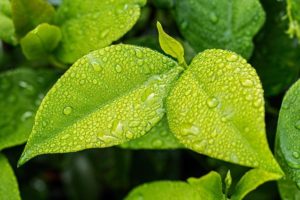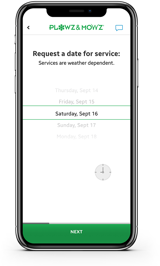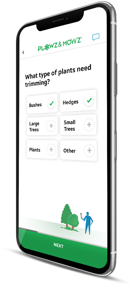Plants In Your Garden That Are Dangerous For Your Dog
Your best bet is to stop your dog from ingesting plants. It’s easy to find stories about people who lovingly dug up their precious gardens to ensure there were no poisonous garden plants for dogs. But this action might be a little over-the-top. The important thing is to keep fence it off to your dog away from these plants, using raised beds he can’t reach or fences he can’t cross. If you can’t make changes or watch him whenever he’s outside, then, yes, you need to dig up that garden.
 When you do, be sure you get every part of the plant from the root (or bulb) to every stray leaf. For example, the common tomato plant—the one we grow on our decks and in tiny gardens—and the same fruit our dogs can eat is poison to dogs. Not the tomato itself, but the plant itself. The beautiful azalea, with its eye-catching vibrant spring flowers, is toxic to dogs. Initially, you may see slight symptoms like diarrhea or vomiting. But if he ingests enough of this plant, his blood pressure may drop to the point of a coma, and death may follow.
When you do, be sure you get every part of the plant from the root (or bulb) to every stray leaf. For example, the common tomato plant—the one we grow on our decks and in tiny gardens—and the same fruit our dogs can eat is poison to dogs. Not the tomato itself, but the plant itself. The beautiful azalea, with its eye-catching vibrant spring flowers, is toxic to dogs. Initially, you may see slight symptoms like diarrhea or vomiting. But if he ingests enough of this plant, his blood pressure may drop to the point of a coma, and death may follow.
Spring plants, like tulips, daffodils, and hyacinths, are problem plants for canines. And the highest level of toxins is found in the bulb itself. And, these bulbs may be packed in dog-enticing substances like feathers, blood meal, ground bone, or fish. Your dog’s nose is 30 times more sensitive than ours, and his brain’s ability to sense what he’s smelling is about 40 times more sensitive. If an attractive plant part is out there and in his path, he will find it.
 Even mulch and the soothing aloe plant can be toxic to your dog. These are just a few examples. A comprehensive list of garden plants that can harm dogs is long. You can painstakingly try to identify every plant you have and compare it to list after list, but this is long and tedious. If you’re starting from scratch or bringing in new plants, that’s a different story. By all means, avoid purchasing any toxic plants. The ASPCA lists both toxic plants and non-toxic plants for dogs on its websites and is pretty much the go-to list. Reactions may vary from itchiness to upset stomachs to death, but all negative associations should be avoided.
Even mulch and the soothing aloe plant can be toxic to your dog. These are just a few examples. A comprehensive list of garden plants that can harm dogs is long. You can painstakingly try to identify every plant you have and compare it to list after list, but this is long and tedious. If you’re starting from scratch or bringing in new plants, that’s a different story. By all means, avoid purchasing any toxic plants. The ASPCA lists both toxic plants and non-toxic plants for dogs on its websites and is pretty much the go-to list. Reactions may vary from itchiness to upset stomachs to death, but all negative associations should be avoided.
Symptoms your dog possibly ingested a toxic substance include:
– Agitation/anxiety
– Bloody vomit, urine, stool
– Collapse
– Coughing
– Diarrhea
– Drooling
– Dry heaves
– Increased drinking
– Increased or decreased urination
If your dog shows these symptoms, get him to a veterinarian immediately. If that is not possible, there are two widely recommended poison experts with 24-hour veterinary staff to help you (yes, they may charge a fee because these experts need to be paid): Pet Poison Hotline and the ASPCA Animal Poison Control Center. Do not give your dog something like hydrogen peroxide to make him vomit out the substances unless you are directed to do so by a veterinarian. Activated charcoal will absorb toxins from the GI tract. Still, again, it’s best to check with your veterinarian or one of the poison-emergency numbers above unless you know the dosages.
Posted on April 30, 2021
Order landscaping services for your home online, anytime!
Get a Free Online Quote Now
Leave the yard work to the pros this year, you can browse our services and schedule an appoinment online, anytime !

























